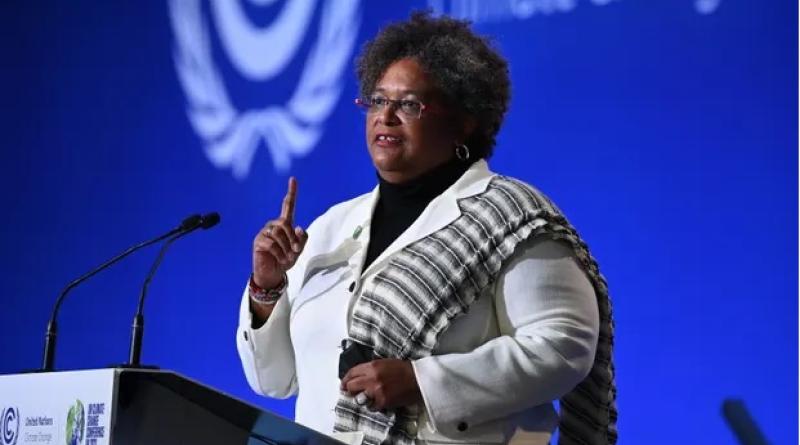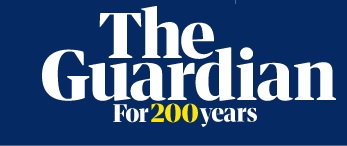Here’s how to repay developing nations for colonialism – and fight the climate crisis

The IMF allots voting rights and emergency funds according to an outdated and unfair quota system established in 1944, before most colonies were free. Let’s change it .
Activists pushing for global reparations for colonialism and slavery are often accused of asking for the politically impossible. At the international scale, however, reparations are more plausible than one might think. That is because an international mechanism to move resources to the formerly colonized world in a politically feasible fashion already exists: the policy instrument of “Special Drawing Rights” (SDRs) managed by the International Monetary Fund.
Calls for changing SDR allocation are not new, nor is the idea that SDRs could function as reparations for trans-Atlantic slavery and colonialism. Professor Cynthia L Hewitt of Morehouse College argued for exactly this strategy as early as 2004. What is new is the political possibility opened by growing awareness of the global climate crisis, which requires solutions that are not only practical but historically just. SDR reallocation, as the Barbadian prime minister, Mia Mottley, suggested in her “stinging” speech at Cop26, is both.
Introduced in 1969, SDRs are essentially “IMF coupons” distributed to central banks or national treasuries around the world, which can either hold them or exchange them with other member countries for cash. “Adding SDRs to a country’s international reserves makes it more resilient financially,” the IMF explains. “In times of crisis, a country can dip into its savings for urgent needs (eg, to pay for importing vaccines).”
Unfortunately, the general allocation of SDRs is unjust and inefficient. That’s no accident. At the 1944 Bretton Woods conference, 44 nations “negotiated” plans for the IMF and World Bank, but only two mattered: the US and the UK, with the latter a distant second. Quota distribution was decided by wartime politics, as Raymond Mikesell, the author of the “formula”, explained 50 years later. No European country expected to lose its empire; India’s presence as the sole colony was the exception proving the rule.
Two decades later, dozens of new countries in Africa and Asia had gained political independence from Britain, France and others. By the mid-1960s, third world countries dominated the UN general assembly, but the “economic decolonization” they sought was impossible without equal representation in global economic governance – the IMF made an entirely new “African department” to handle the overflow. It was in this context that SDRs were born.
“In 1965, when serious discussions of creating the SDR first got underway, a group of experts … argued that SDRs should be allocated with a view to meeting the development needs of newly independent countries,” explains economic historian Barry Eichengreen. While the former colonial powers and the US enjoyed a fossil-fueled “Golden Age” of capitalism, inequality between rich and poor countries reached new heights. SDRs, some reasoned, would allow poor countries to prioritize the development that colonialism had denied, without risking mass capital flight or default. “But when SDRs were issued in 1970, they were allocated instead in proportion to IMF members’ quotas.”
This August, the IMF’s board of governors approved $650bn in new SDRs, its largest allocation since 1945 and more than double its expansion in 2009 at the height of the global financial meltdown. Because SDRs are allocated by quota, however, low-income developing countries received just 1.4% of that massive sum. High-income developing countries such as China did better, at 22%, but rich countries took the lion’s share – over 60%. The US gobbled up an obscene 17%. Moreover, US law requires that the US Treasury consult Congress for large changes in SDR allocations, giving US lawmakers a functional unilateral veto over any new and significant SDR allocations.
Of course, the US will never touch its SDRs – the “exorbitant privilege” of the US dollar means the country can print all the money it needs. Other rich countries have similarly low- or zero-utilization rates; reaching into their SDRs would be an admission of failure. On the other end, the vast majority of Small Island Developing States and low-income developing countries – countries that, lest we forget, have never created a global financial meltdown – rely on their meager reserves for emergencies of all kinds.
The quota system is worse than a relic – it is a literal representation of how colonialism continues to lock poor countries out of global governance. For the African countries still using the CFA franc currency instituted by the French empire, the connection to colonialism goes well beyond the symbolic: while most of the world’s countries are permitted to use their SDRs unconditionally, the use of SDRs by these former French colonies is assessed by IMF-supported “surveillance consultations” on a “case-by-case basis”. Quota size also determines voting power on the IMF’s board of governors, giving the US a 17% share of the vote. Since major IMF decisions require an 85% share of votes, this gives the US a functional veto over the voting system that SDR allocations are currently based in. The IMF recognizes the need for change, but the US has blocked even marginal reforms, while hoarding SDRs it neither needs nor uses.
Yet it is entirely possible for the IMF and international community to turn SDRs into an effective tool for climate reparations, rather than more money-under-the-mattress for rich countries. Here are a few ways that could happen.
First is the IMF’s own proposal. As its managing director, Kristalina Georgieva, has rightly acknowledged, Africa contributes “almost nothing” to global warming but is bearing the consequences – and costs – largely by itself. Her idea, endorsed by G20 finance ministers at their October 2021 summit in Rome, is a new Resilience and Sustainability Trust (RST) within the IMF worth up to $50bn. Through the RST, wealthy countries could turn their SDRs into climate finance for low- and middle-income countries vulnerable to climate shocks. But $50bn – less than half of the US’s new allotment – is not only insufficient, it’s unlikely. As a mechanism, not a mandate, the RST cannot compel rich countries to redistribute their SDRs. Even if the target is met, “design flaws” including eligibility requirements and conditionalities “would render the planned RST ineffective for most climate-vulnerable countries”, as members of a Boston University taskforce have noted.
The good news is: better alternatives already exist. In fact, most multilateral development banks (MDBs) are prescribed holders, including new climate-focused ones like the UN’s Adaptation Fund and Green Climate Fund could be added with US assent. MDBs have climate knowledge and knowhow that the IMF, late to the climate game, lacks, and, as prescribed holders, MDBs can use SDRs as a normal part of their financial operations.
“Rechanneling SDRs to the multilateral development banks will extend [their] reach and power,” explains the Center on Global Development. The African Development Bank and other MDBs have called for just this, but so far the IMF has turned them down. Another option is the creation of Special Environmental Drawing Rights within the IMF, which would help fund national investment plans aligned with a country’s climate objectives.
The best option is the simplest and the most just: eliminate the allocation system based on members’ “quota” and build a new one based on reparative principles, as Professor Hewitt argued years ago and as Prime Minister Mottley advances today. Such an alternative ranking system would allocate the most SDRs to the countries most disadvantaged by slavery and colonialism as well as climate vulnerability.
International funding for phasing out fossil fuels and adapting to climate impacts is trillions of dollars short of what will be required to avoid the worst climate impacts. More than a decade in, the Green Climate Fund (the world’s largest dedicated climate fund) has managed to raise merely a tenth of a target that was an order of magnitude too small to begin with. SDR allocations can provide an alternative to the broken global climate financing system via an institution that is at least nominally publicly responsible, as opposed to relying on fantasies about the social responsibility of the private sector.
Not only are SDRs great climate finance, dollar for dollar, but rich countries have little to lose beyond the IMF “coupons” they don’t need and won’t spend. Ditching the quota system outright may not happen (yet), but redistributing SDRs is a serious and feasible way for rich countries to begin a process of reparations and avoid the worst versions of climate crisis at the same time.
-
Michael Franczak is a postdoctoral fellow at the University of Pennsylvania’s Perry World House and the author of the forthcoming book Global Inequality and American Foreign Policy in the 1970s
-
Olúfẹ́mi O Táíwò is an assistant professor of philosophy at Georgetown University and the author of the forthcoming book Reconsidering Reparations
Cover photo: ‘The global climate crisis requires solutions that are not only practical but historically just. SDR reallocation, as the Barbadian prime minister, Mia Mottley, suggested at Cop26, is both.’ Photograph: Jeff J Mitchell/PA





